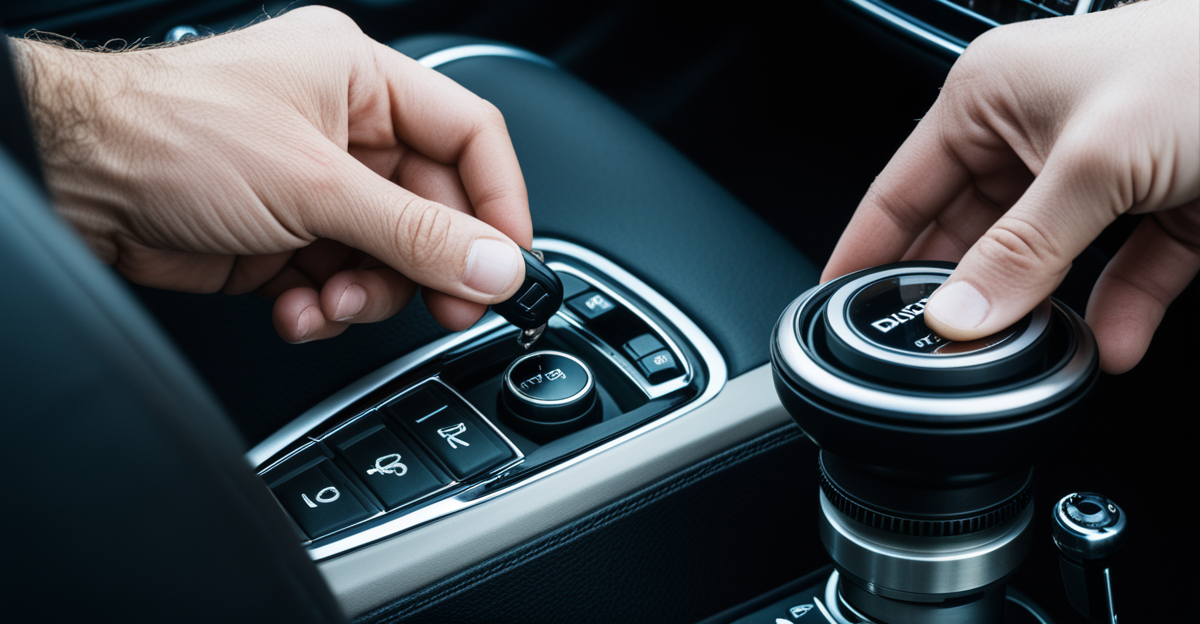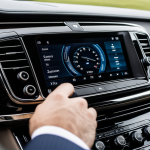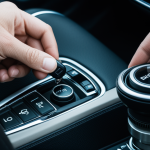Understanding Dual-Clutch Transmissions: UK Context
Dual-clutch transmission basics reveal a system that employs two separate clutches for odd and even gear sets, enabling rapid, seamless gear shifts. This design eliminates torque interruption common in manual gearboxes, resulting in improved acceleration and fuel efficiency—an important benefit in the UK’s stop-start city traffic.
In the UK automotive market, dual-clutch transmissions stand out compared to traditional automatic and manual gearboxes. Unlike conventional automatics that use a torque converter, dual-clutch systems offer quicker response times and smoother shifting without the typical lag. Compared to manual gearboxes, they reduce driver effort while maintaining sporty driving characteristics.
Have you seen this : Your Ultimate Roadmap: Mastering the Import of JDM Cars into the UK
Key features of dual-clutch transmissions include enhanced control, fuel savings, and reduced wear due to fewer frictional losses. UK drivers appreciate these benefits especially on urban roads where frequent gear changes are needed. However, unlike standard transmissions, dual-clutch units require tailored maintenance practices to ensure durability on British roads.
Overall, understanding the differences between dual-clutch and other transmissions in the UK context helps drivers make informed decisions suited to local conditions and driving patterns.
Core Causes of Rough Shifting in Dual-Clutch Vehicles
Delving into why jerky gear changes happen
Dual-clutch shifting issues often stem from a combination of mechanical wear and electronic faults. Common gearbox problems in the UK include worn clutch plates, failing mechatronics units, and sensor malfunctions affecting clutch engagement timing. These components must work flawlessly for smooth transitions; any lag or misalignment can cause rough shifts.
UK-specific factors amplify troubles. Frequent stop-start traffic and harsh road surfaces increase stress on the dual-clutch transmission, accelerating wear. Additionally, the UK’s damp climate can lead to corrosion or lubricant breakdown, further hindering performance.
Electronic control units in dual-clutch systems monitor gear change timing precisely. When sensors relay incorrect data—due to faults or debris—shifting becomes jerky. Mechanical causes such as clutch slipping or hydraulic pressure loss also disrupt smooth gear engagement.
Understanding these underlying causes is essential for effective transmission troubleshooting. Regular diagnostic checks can detect early electronic glitches before they evolve into chronic shifting problems. Addressing both hardware and software issues ensures reliable, smooth operation, even under challenging UK conditions.
Practical Techniques for Achieving Smooth Shifting
Mastering seamless transitions on UK roads
Achieving smooth dual-clutch operation hinges significantly on driver technique, especially within UK driving contexts. One key tip is to adopt a gentle acceleration approach during gear changes. Sudden throttle inputs can disrupt the transmission’s clutch engagement timing, increasing the risk of dual-clutch shifting issues such as jerky or rough transitions.
Drivers should also anticipate traffic conditions in urban areas where stop-start movement prevails. Maintaining a steady speed and avoiding abrupt braking or acceleration help the transmission modulate gear shifts more effectively. In motorway settings, using the transmission’s manual or sport mode (if available) allows for more precise control, facilitating smoother gear progression at higher speeds.
Understanding how to adjust driving style to dual-clutch systems also involves minimizing excessive load when stationary, such as prolonged clutch engagement during hill starts. Instead, drivers should rely on the system’s automated controls and avoid unnecessary foot pressure on the accelerator.
In summary, driver tips UK emphasize anticipation, smooth throttle inputs, and adapting to traffic flow for consistent smooth dual-clutch operation. These simple but effective techniques can significantly reduce common shifting complaints and enhance vehicle longevity on the variable UK roads.
Essential Maintenance for Dual-Clutch Reliability
Dual-clutch maintenance UK demands careful attention
Regular dual-clutch maintenance UK is vital to prevent costly repairs and ensure optimal transmission health. Critical service intervals involve inspecting and replacing transmission fluid, which must meet specific viscosity standards designed for dual-clutch systems. Incorrect lubricants can cause clutch wear and slipping, leading to gears grinding or rough shifting.
Preventative checks include monitoring for unusual noises or delayed gear engagement—early signs of wear that warrant prompt inspection. UK drivers should also prioritize filter cleaning or replacement to avoid contamination affecting hydraulic circuits, a common cause of fault codes triggering shifting errors.
Routine servicing every 40,000 to 60,000 miles aligns with manufacturer recommendations but may require shortening in UK conditions with frequent stop-start driving and damp weather. Using OEM-approved fluids and parts protects the delicate mechatronics unit, a costly component vulnerable if neglected.
Regular monitoring coupled with professional diagnostics enhances transmission health and prevents breakdowns typical in the UK. A proactive approach not only delivers smooth shifting but extends component longevity, ultimately saving on expensive gearbox repairs. Following these prevention tips confidently supports reliable performance tailored to UK road demands.
Troubleshooting: Step-by-Step Guide to Smoother Shifts
Diagnosing and resolving gear change challenges on UK roads
When tackling dual-clutch shifting issues, a systematic approach ensures effective results. Start by observing symptoms: Are shifts delayed, jerky, or accompanied by unusual noises? These clues pinpoint whether problems lie in mechanical wear or electronic faults common in gearbox problems UK.
The first troubleshooting step involves checking transmission fluid level and condition. Low or degraded fluid compromises hydraulic pressure, causing clutch slipping and rough shifts. Next, scan for error codes using a diagnostic tool—these reveal sensor failures or mechatronics malfunctions affecting gear engagement timing.
For many common faults, quick fixes include fluid replacement with OEM-spec lubricants and resetting the transmission control unit. Cleaning or replacing filters also prevents hydraulic blockages that trigger shifting errors. However, internal clutch wear or hydraulic leaks require professional inspection.
When is professional assistance necessary? Persistent rough shifting after basic fixes, repeated fault codes, or symptoms like delayed gear engagement indicate underlying hardware issues. Complex repairs may involve clutch pack replacement or mechatronics unit servicing, tasks beyond typical DIY repair capabilities.
Following this dual-clutch troubleshooting guide empowers UK drivers to identify issues early. Timely intervention preserves transmission health and promotes reliable, smooth gear changes suited to local driving conditions.
Dual-Clutch Dos and Don’ts for UK Drivers
Fostering longevity through informed use
Adopting best practices dual-clutch enhances performance and durability in the UK’s varied driving conditions. One crucial do is to avoid “riding the clutch” by not holding the accelerator or brake too aggressively during gear changes. Smooth, gradual inputs support safe transmission use and prevent unnecessary wear on clutch packs.
Another important do is to utilise the vehicle’s automatic or manual mode appropriately. For example, engaging manual mode on motorways gives more precise control over gear changes, reducing excessive shifting that can accelerate degradation. Conversely, in heavy urban stop-start traffic, letting the system manage shifts reduces driver fatigue and wear.
Among the key don’ts, avoid sudden throttle changes or abrupt braking, as these stress the transmission’s electronic and mechanical components, causing common dual-clutch shifting issues. Also, resist the temptation to push a dual-clutch vehicle aggressively when cold; allowing the transmission to warm up protects hydraulic systems and lubricants, crucial for transmission health.
In summary, adopting these UK driving dos and don’ts helps maintain smooth operation and longevity of dual-clutch transmissions, minimizing the risk of costly repairs and optimising driving enjoyment.
Troubleshooting: Step-by-Step Guide to Smoother Shifts
Addressing dual-clutch shifting issues effectively
Diagnosing gear change problems begins with identifying symptoms such as delayed shifts, jerky transitions, or unusual noises commonly reported in gearbox problems UK. These signs guide whether faults stem from mechanical wear or electronic glitches.
A key initial action is checking transmission fluid levels and quality. Low or contaminated fluid impairs hydraulic pressure, causing erratic clutch engagement and contributing to dual-clutch shifting issues. Next, employing a diagnostic scanner helps reveal error codes linked to sensor failures or mechatronics malfunctions impacting smooth gear shifts.
Quick fixes often include replacing fluid with manufacturer-approved types and resetting the transmission control unit. Cleaning or swapping filters prevents hydraulic blockages that trigger shifting faults. However, persistent symptoms may indicate clutch pack wear or hydraulic leaks, necessitating professional inspection.
DIY repair tips advise caution with complex internal repairs; clutch or mechatronics unit servicing requires skilled technicians due to system intricacy. Timely use of this dual-clutch troubleshooting guide allows UK drivers to address problems early, preserving transmission health and ensuring reliable performance tailored to local driving demands.






